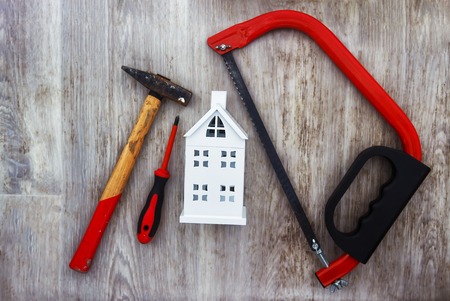1. Identifying Power Supply Issues
If your outdoor lighting isnt turning on, the first thing to check is the power supply. Many outdoor lighting problems stem from simple electrical issues that can be easily fixed once identified. Heres how you can troubleshoot the most common power-related problems.
Check the GFCI Outlet
GFCI (Ground Fault Circuit Interrupter) outlets are commonly used for outdoor electrical fixtures because they help prevent electrical shock. If a GFCI outlet trips, it will cut power to your outdoor lights.
Steps to Check:
- Locate the GFCI outlet – it may be outside, in your garage, or even in your basement.
- Press the “Reset” button on the outlet.
- If it trips again immediately, there may be moisture or a short circuit in your lighting system.
Inspect Your Circuit Breaker
Sometimes, a tripped circuit breaker is the cause of your lights not working. This usually happens when theres an overload or short circuit.
How to Reset a Tripped Breaker:
- Go to your homes main breaker panel.
- Look for any breakers that are in the middle position or clearly marked as “tripped.”
- Switch them fully off and then back on.
Test the Transformer
If youre using low-voltage landscape lighting, your system likely includes a transformer that reduces standard voltage (120V) to a safer level (usually 12V). If this transformer fails, none of your lights will work.
Troubleshooting Tips:
- Ensure the transformer is plugged in and switched on.
- Check if there’s a timer or photocell attached that might be set incorrectly or malfunctioning.
- If possible, use a multimeter to check output voltage from the transformer. It should match what your lights require (commonly 12V).
Quick Reference Table: Troubleshooting Power Supply Issues
| Component | What to Check | Possible Fixes |
|---|---|---|
| GFCI Outlet | Is it tripped? | Press “Reset” button; inspect for moisture issues |
| Circuit Breaker | Is it flipped? | Turn off and back on; look for overloading signs |
| Transformer | Is it powered and functioning? | Check plug, timer settings, and output voltage |
Tackling these basic checks can often resolve outdoor lighting issues without needing professional help. If everything looks fine but the lights still won’t turn on, we’ll explore more possibilities in the next section.
2. Fixing Burned-Out or Flickering Bulbs
Outdoor lights are exposed to the elements, so it’s not uncommon for bulbs to burn out or start flickering over time. These issues can be frustrating, especially when they affect your home’s curb appeal or safety at night. Here’s how to identify and fix these common problems quickly and effectively.
How to Identify a Faulty Bulb
If a light isn’t working, the first thing to check is the bulb itself. Sometimes it’s as simple as a burned-out bulb that needs replacing. But other times, flickering may indicate a loose connection or an incompatible bulb type.
Common Signs of Bulb Issues
| Symptom | Possible Cause |
|---|---|
| No Light | Burned-out bulb or broken filament |
| Flickering | Loose socket connection or incompatible bulb |
| Dim Light | Aging bulb or low voltage supply |
Selecting the Right Replacement Bulb
When replacing outdoor bulbs, make sure to choose ones that are rated for exterior use. Using indoor bulbs in outdoor fixtures can lead to quicker burnout and potential safety hazards. Also, consider LED options—they last longer and handle weather changes better than incandescent bulbs.
Check for Compatibility
If your light is still flickering after replacing the bulb, the issue might be compatibility between the bulb and fixture. For example, some older fixtures aren’t designed to work with certain types of LED bulbs. Always match the wattage and base type recommended by the fixture manufacturer.
Tightening and Cleaning Socket Connections
A loose or corroded socket can also cause flickering. Before inserting a new bulb, turn off power to the fixture and inspect the socket. Use a dry cloth to remove any debris or corrosion. If the socket feels loose, gently tighten it if possible.
Quick Tip:
- If you live in a humid area, consider using weatherproof light sockets and silicone sealant around fixtures to prevent moisture damage.
- Avoid touching new bulbs with bare hands; oil from your skin can shorten the lifespan of halogen or LED bulbs.
Maintaining Consistent Lighting Across Fixtures
If one light is brighter or dimmer than others, double-check that all bulbs are of the same type and wattage. Mixing different kinds of bulbs can result in uneven lighting and inconsistent performance across your outdoor space.
Troubleshooting Multiple Lights at Once
| Problem | What to Check First |
|---|---|
| Several lights flicker together | Main wiring connection or transformer issue (for low-voltage systems) |
| Some lights dimmer than others | Mismatched bulbs or voltage drop due to long wire runs |
| No lights working in one area | Circuit breaker or GFCI outlet tripped |
Taking a few minutes to inspect your outdoor lighting setup regularly can save you time and frustration down the line. With the right approach, keeping your exterior lights glowing bright is easier than you think!
![]()
3. Dealing with Timer and Sensor Malfunctions
If your outdoor lights aren’t turning on or off at the right times, it might be due to a faulty timer, photocell, or motion sensor. These components are key for automating your lighting system, so when they fail, it can throw off your entire setup. Let’s go over how to identify the problem and fix it.
Common Signs of Timer or Sensor Issues
Before diving into repairs or replacements, look for these common signs that a timer or sensor may not be working properly:
| Problem | Possible Cause |
|---|---|
| Lights stay on all day | Photocell is dirty or malfunctioning |
| Lights don’t turn on at night | Timer settings are off or power loss reset the schedule |
| Lights flicker or turn on/off randomly | Motion sensor is too sensitive or misaligned |
| No response from lights | Defective timer or loose wiring |
How to Reset Outdoor Light Timers
If you have a digital timer, check if theres a “Reset” button. Press it and reprogram the on/off schedule according to your needs. For mechanical timers, ensure the dial is set correctly and that the tabs are in the right positions. Always check for power interruptions—they can erase programmed settings.
Steps to Reset a Digital Timer:
- Locate the reset button (usually a small pinhole)
- Use a paperclip to press and hold for 5 seconds
- Re-enter the desired time and schedule settings
- Double-check AM/PM settings to avoid confusion
Troubleshooting Photocells
A photocell senses daylight and turns lights on at dusk and off at dawn. If your lights stay on all day or don’t come on at night, the sensor may be blocked by dirt or facing the wrong direction.
Quick Fixes for Photocells:
- Clean the sensor with a soft cloth—dust can block light detection
- Make sure its not covered by leaves, eaves, or decorations
- Replace the photocell if cleaning doesnt help—it’s often more cost-effective than repairing it
Adjusting or Replacing Motion Sensors
Motion sensors detect movement and trigger lights. If your lights flicker too often or don’t respond, try adjusting the sensitivity dial located on the sensor unit.
Troubleshooting Motion Sensor Issues:
- No reaction: Check power connection and make sure sensor lens is clean
- Too many false triggers: Lower sensitivity setting or reposition away from street traffic or trees
- Sporadic operation: Consider replacing the sensor if adjustments don’t help
Pro Tip:
If youre replacing any of these components yourself, always turn off power at the breaker box before starting any work. Safety first!
Tackling timer and sensor problems doesn’t have to be complicated. A few simple checks and adjustments can usually restore proper function to your outdoor lighting system.
4. Addressing Wiring and Connection Problems
Outdoor lighting systems rely heavily on solid wiring and tight connections to function properly. Over time, exposure to weather elements, animals, and regular wear can cause wiring issues that lead to flickering lights, full outages, or inconsistent performance. Heres how to identify and fix the most common wiring and connection problems.
Common Signs of Wiring and Connection Issues
- Lights flicker or go out randomly
- Certain sections of the lighting system arent working
- You notice exposed wires or visible damage near fixtures
- Breaker trips when turning on outdoor lights
How to Troubleshoot and Repair Wiring Problems
Before getting started, always turn off the power to your outdoor lighting system at the breaker box to prevent electrical shock.
1. Inspect for Frayed or Corroded Wires
Frayed wires are often caused by animals chewing on them or natural wear over time. Corrosion happens when moisture gets into the wire connections. Check around each fixture and junction box.
| Issue | What to Look For | Solution |
|---|---|---|
| Frayed Wires | Exposed copper, damaged insulation | Cut out damaged section and use waterproof wire connectors to reconnect |
| Corroded Wires | Green or white powdery build-up at connections | Clean with a wire brush or replace connector; use dielectric grease before reconnecting |
2. Tighten Loose Connections
If your lights are flickering or not turning on, a loose connection might be the culprit. Check all wire nuts and terminal screws in your lighting system. Make sure everything is snug and secure. You can also gently tug each wire—if it moves easily, it needs tightening.
3. Check Underground Wire Runs
If an entire zone of lights isn’t working, there may be damage to the underground cable. This can happen due to landscaping work, digging, or shifting soil.
- Use a wire locator tool: These tools can help trace underground lines and detect breaks.
- Dug up area recently? Focus on spots where recent digging occurred—this is often where damage happens.
If you find a break: Dig carefully around the area, cut out the damaged section, then splice in a new piece using waterproof gel-filled connectors designed for direct burial.
Tip:
If youre replacing multiple sections of wire outdoors, consider upgrading to UV-resistant and direct-burial rated cables for longer-lasting durability.
5. Solving Issues with Uneven or Dim Lighting
Uneven or dim outdoor lighting can make your yard look uninviting and reduce visibility at night. This problem usually stems from voltage drop, outdated transformers, or poor fixture placement. Heres how to troubleshoot and fix these issues effectively.
Check for Voltage Drop
Voltage drop happens when electricity travels a long distance through low-gauge wire, causing lights farther from the transformer to appear dimmer than those closer to it. To balance the voltage:
- Use thicker gauge wire for longer runs.
- Create multiple shorter runs from the transformer instead of one long run.
- Install a multi-tap transformer that lets you adjust output for different zones.
Example of Voltage Drop by Wire Gauge
| Wire Gauge | Distance (ft) | Max Wattage Without Significant Drop |
|---|---|---|
| 12 AWG | 100 ft | 192 watts |
| 14 AWG | 50 ft | 120 watts |
| 16 AWG | 25 ft | 60 watts |
Upgrade Your Transformer
If your transformer is too small for your current lighting load, it won’t provide enough power for all fixtures. Upgrading to a higher-capacity or multi-tap transformer can help distribute voltage more evenly across your landscape lighting system.
Reposition Lighting Fixtures
Poorly placed fixtures can cause light pooling in some areas while others remain dark. To fix this:
- Aim spotlights to overlap slightly for even coverage.
- Add path lights between existing ones to fill in gaps.
- Avoid placing multiple lights too close together unless layering light intentionally.
Troubleshooting Tip:
If youre not sure whether the issue is electrical or positional, try temporarily swapping a dim fixture with a bright one. If the brightness stays the same, it’s likely a power issue. If it changes, placement could be the problem.


